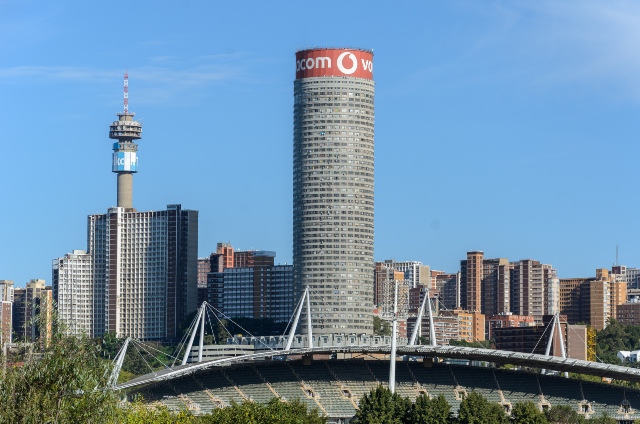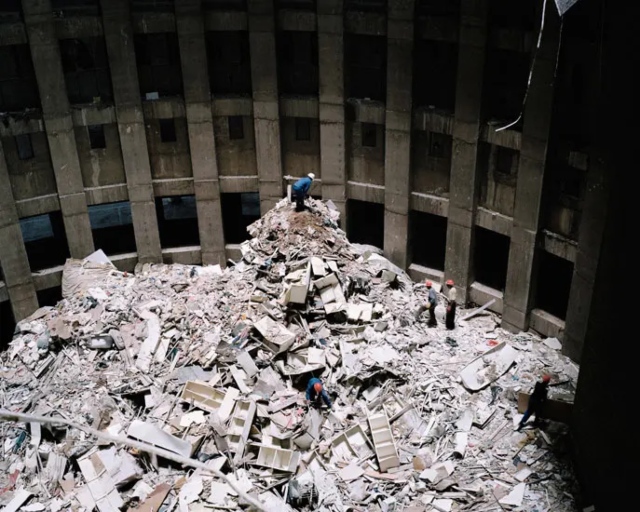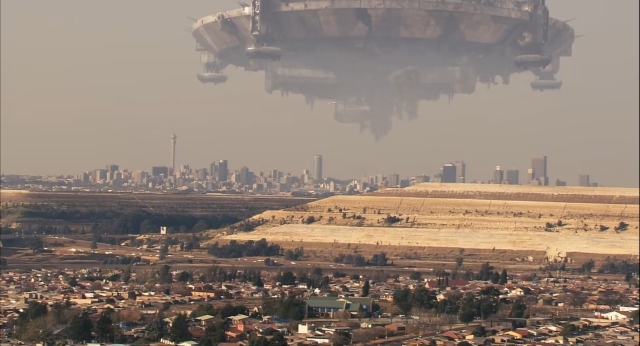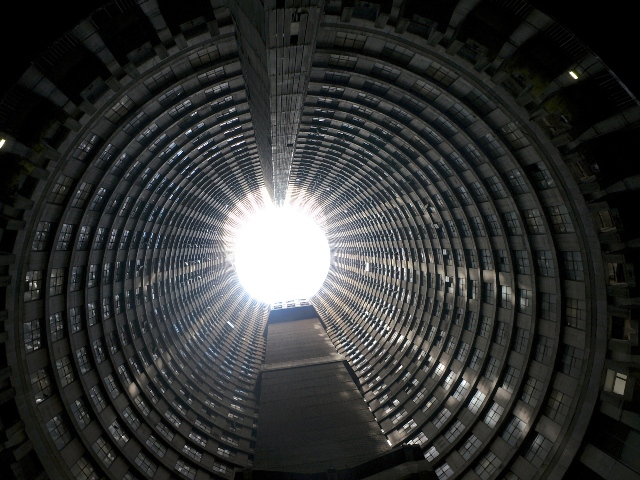
-
Exploring Johannesburg’s Infamous Ponte City – A 54-Storey Toilet-Paper Tube Skyscraper With Haunting Lore
24 Jul 2023 by Tayla in Crime, Johannesburg, Lifestyle, Property, South Africa
[image:wikimediacommons]
Johannesburg’s infamous Ponte City tower may be Africa’s tallest apartment building but it was also South Africa’s symbol of inner-city dilapidation for a long time.
Everybody has a story about the 54-storey toilet-paper tube skyscraper, which quickly turned it into Jozi’s centre for haunting lore. The giant brutalist-styled cylindrical building might be safer and well-run now, but it is easy to imagine which of its many stories are true, especially when you gaze down 173 metres (from the top) into the dark centre below.
In an editorial piece by The Atlantic, the giant building, completed in 1975 as a posh address for white residents during Apartheid, was noted as a “vertical warehouse for South Africans’ greatest hopes and worst fears about their cities and themselves”.
The gaping open core of the building already lent it an eerie feel, but it became far more terrifying as the fall of apartheid transformed the city centre, dragging the building into becoming a symbol of the violence and decay that gripped parts of Jozi during our country’s messy transition to democracy in the 1990s.

Image: Pexels
Once a sought-after location, the tower fell into disrepair as the once thriving central business district was deserted by big corporates, initially due to sanctions slapped against South Africa’s Apartheid regime, noted Africa News.
In the 1980s and 1990s the grey concrete tower became a haven of violent gangs and a hub for drug trafficking and prostitution.
The tower’s windows were sealed off to prevent people from tossing their trash into the shared yard during the years when there were no garbage bins in the area.
The rubbish situation got so out of hand – with stinking bags thrown right down the centre of the hollow core until the mess stood five floors deep – that stories started doing the rounds of dead bodies being buried there, too:

Image: here
Stuff wrote that the core served as a suicide drop, “where the bodies – if you believe some stories – were only pulled out during the eventual cleanup”.
It become the world’s tallest urban slum. It was originally built to house around 3 500 people but was home to more than 10 000 people at the peak of its “hijacked” statues.
Hollywood soon figured out the logical endpoint of that metaphor. Over the past few years, the building has appeared in several international films. Always portrayed as a place both desolate and dangerous, its credits include District 9, Chappie, and a Drake music video:
Alien space ships hovered above it in District 9, gangsters staged dogfights in its haunting circular “core” in Chappie, and Navy Seals stormed through the building in search of a team of Congolese warlords in Seal Team 8: Behind Enemy Lines (that film, whose urban scenes are shot in South Africa, ostensibly takes place in the Democratic Republic of the Congo).

Image: Chappie
Drake filmed the climactic gangster-showdown scenes in his surreal 20-minute extended music video “Please Forgive Me” there. And in between, the building has been used to sell everything from beer to McDonalds. With a few exceptions, there are some common motifs among all these takes on Ponte: fire, garbage, garbage on fire, and of course, lots and lots of gunshots.
Most iconically, though, it became a zombie apocalyptic wasteland in Resident Evil.
View this post on InstagramThings slowly turned around for Ponte when the owner – a London-based property group Kempston Group – hired an eviction company to turf out the drug lords and all the other unsavoury characters by 2001. The building changed hands again, but by 2011, Kempston had taken charge of the building again. Cue the facelift in the run-up to the 2010 FIFA World Cup:
It hired a full-time caretakers and a crew to clean out the building’s core – a disgusting job that apparently took around three years and hundreds of men and machinery. A team of people still regularly cleans rubbish thrown down into the core. Slowly, it’s become one of the “safest” places in the area where its residents – now mostly middle-class city workers and students – can only gain access by using their fingerprint at entry points. It has 24/7 security and some very harsh rules – overnight visitors need to be registered with security, and others have to leave by 9pm.
Music teacher Polite Ngwenya, 33, says that “People in the neighbourhood don’t realise how lucky we are,” he told AFP. “Security here is on point, the building is clean and the towering views are great, unique.”

Image: TriStar Pictures
The foundation Dlala Nje – Zulu for “Let’s have fun!” – wants to change negative perceptions about the area. For the past decade, it has been offering walking tours of the neighbourhood, culminating at the tower, which has become a tourist attraction.
Time Magazine has a couple of haunting images of the place and so does South China Morning Post.
It’s going to take much longer to undo the years of having a bad reputation.
[sources:africanews&theatlantic&stuff]
Latest News
-
Powerful South African Short Film ‘The Last Ranger’ Scoops Up Awards And International Praise
[imagesource: Cindy Lee Director/Facebook] A compelling South African short film, The L...
-
Caprice Summer Has Started With Brunch (But Better) This Saturday + Other Lush Camps Bay Parties
[imagesource: Instagram/cafecaprice] Is it just me or has Summer been taking its sweet ...
-
Notre-Dame Cathedral In Paris Restored And Ready For Grand Reopening After Devastating Fire
[imagesource:wikimedia] After five years of work and millions in donations, The Notre-D...
-
Self-Destructing Number Plates: The Future Of Gauteng’s Roads Or Spy-Tech Fantasy?
[imagesource:worldlicenseplates.com] What sounds like a James Bond movie is becoming a ...
-
I Changed My Relationship With Food And You Won’t Believe What Happened Next
[imagesource:supplied] As the festive season approaches, it's time to deck the halls, g...
-






























